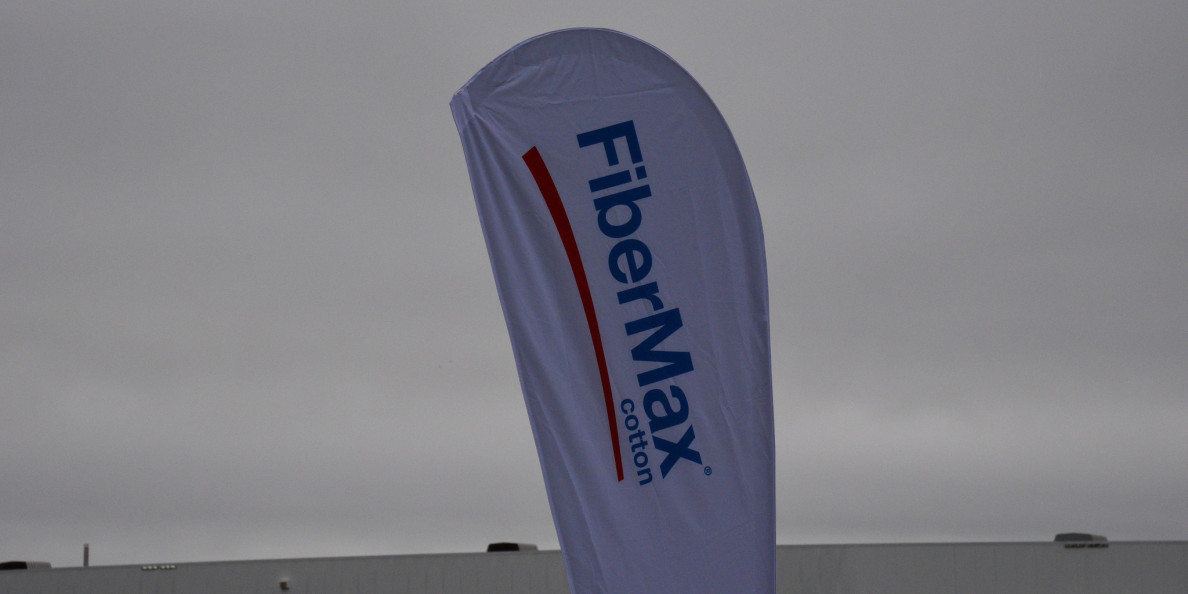A burgeoning denim manufacturing operation, near the bank of the Mississippi in eastern Louisiana, is gradually making a name for itself producing fabric for boutique jeans brands around the U.S. Vidalia Mills is a vertical operation, using BASF’s e3 cotton as its primary raw material.
Vidalia management purchased a massive former Fruit of The Loom distribution center during the second half of 2018, converted portions of it to manufacturing operations and began producing denim in 2019. Located in the eponymous small town across the river from Natchez, Miss., Vidalia sources cotton from producers stretching from Texas to the Carolinas.
e3 Cotton
Vidalia opted for e3 cotton as the core of its sustainability effort. The objective is manufacturing with raw materials that are 100% traceable, a key issue for the company. If all goes according to plan, Vidalia will use about 40,000 bales of cotton this year.
“We wanted something that had some metrics behind it, where if somebody asked us where we get our cotton from and how it is grown, we could actually point to a database and get a printout of where it came from, how it compared to other growers in a particular region,” Antoshak said. “We made a commitment early on to have a compelling story.”
Furthermore, as part of Vidalia’s “dirt-to-shirt” manufacturing proposition, the company has five acres of e3 cotton growing on the property. Antoshak said the yield in 2020 was good for a first year, considering Vidalia experienced five hurricanes. That number of acres figures to grow in the coming years.
“We could easily do another 20 to 30 acres,” Antoshak said. “It’s not irrigated; it’s just rain fed. They used to grow cotton on this land, so we knew it could be done. The gin is only 10 miles away. We can gin it and bring it back with a low carbon footprint. It’s very different from what most business has grown into.”
A BASF cotton consultant and local producer oversees Vidalia’s crop.
Antoshak describes Vidalia as being regionally based in terms of sourcing. “Our business model is not based on producing huge amounts of product and then hoping it sells. Instead, it is based on people coming to us and letting us know what they need and then making it for them. We are a bit more bespoke than your typical mill.”
At the core of Vidalia’s business is high-end denim, a space where the company doesn’t have to directly compete with much larger manufacturers around the globe.
Selvedge denim
Vidalia produces much-coveted selvedge denim on 45 vintage Draper X3 looms which once were operated by Cone Mills at its historic White Oak Plant in Greensboro, N.C. Vidalia, which is one of just two denim manufacturers still operating in the U.S., is the only one currently producing all of its yarn. The company is broadening its manufacturing this year, adding modern, wide, high-speed weaving machines to produce less expensive stretch denim.
“In the denim world the problem is there is too much capacity,” Antoshak said. “It makes no sense to try to compete with the monster denim mills all over the world. So instead, our thought was to have specialty products and aim for the specialty end of the market. With the wide looms we can produce some less expensive products that we can incorporate different fibers into.”
There is plenty of room in the 2-million-square-foot facility for future expansion.
“We still have a fair amount of space left,” Antoshak said. “We have our own USDA certified warehouse in the building and can store cotton for all kinds of people, even though we are not using it. We designed the business to be multi-level, so we are not just a spinner and we are not just a weaver. We are also looking to do full-package production and we are also doing raw material storage.”
Vidalia management plans to integrate further up the pipeline this year by adding a cut-and-sew operation.
“The idea for this year is to have cotton come in one end, and have finished product come out the other end of the building,” Antoshak said. “That will be jeans, and also T-shirts if we decide to start knitting in-house. We haven’t made the final decision on that.”
Vidalia management considers the company to be fortunate to have — so far — navigated though the challenges of the pandemic. Some projects weren’t launched as quickly as planned, but the personnel and machinery are now intact and Antoshak said there is plenty of reason for optimism. The company has assembled a loyal collection of customers and works with them on marketing initiatives.
“A lot of companies have had slowdowns associated with COVID, and there were slowdowns in the overall industry,” Antoshak said. “We hadn’t anticipated starting with big brands as customers. One of the things we did with the mill was to have a model to start with small brands. It turned out the small brands were the ones nimble enough to survive in a very tough market. As a result, our demand has really been pretty good.”


